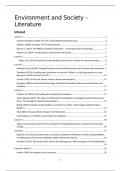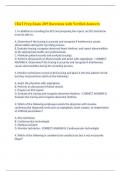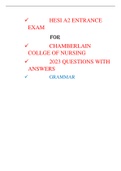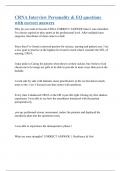Samenvatting
Summary Environment & Society: all the preparatory literature!
You don't want to read all the papers and articles for the course Environment and Society, but you want to have the information? Then this summary is ideal for you! It includes short summaries with the highlights of each article. It helps you with understanding the lectures and making the exam, but...
[Meer zien]









